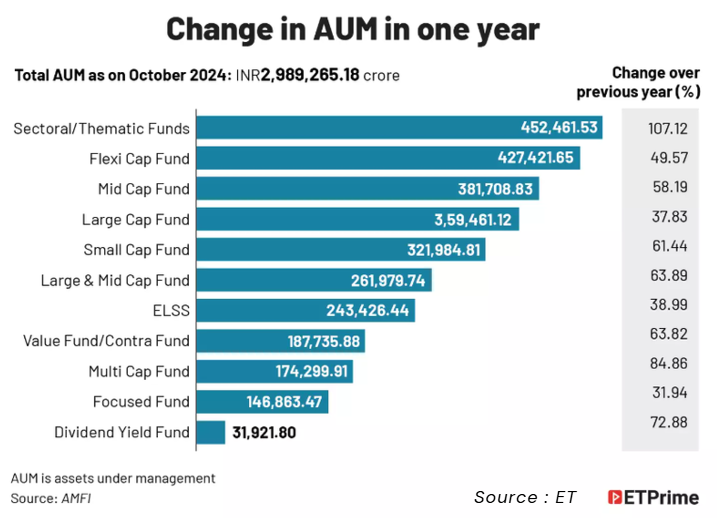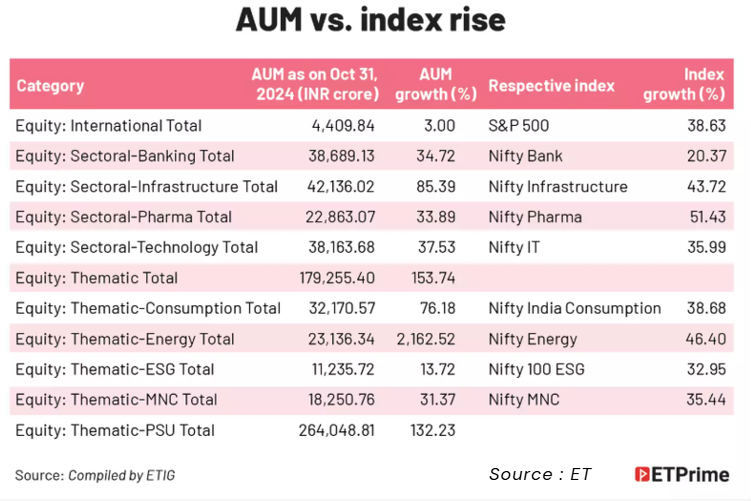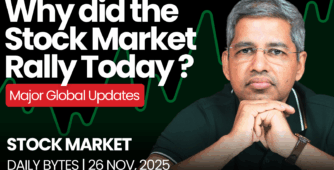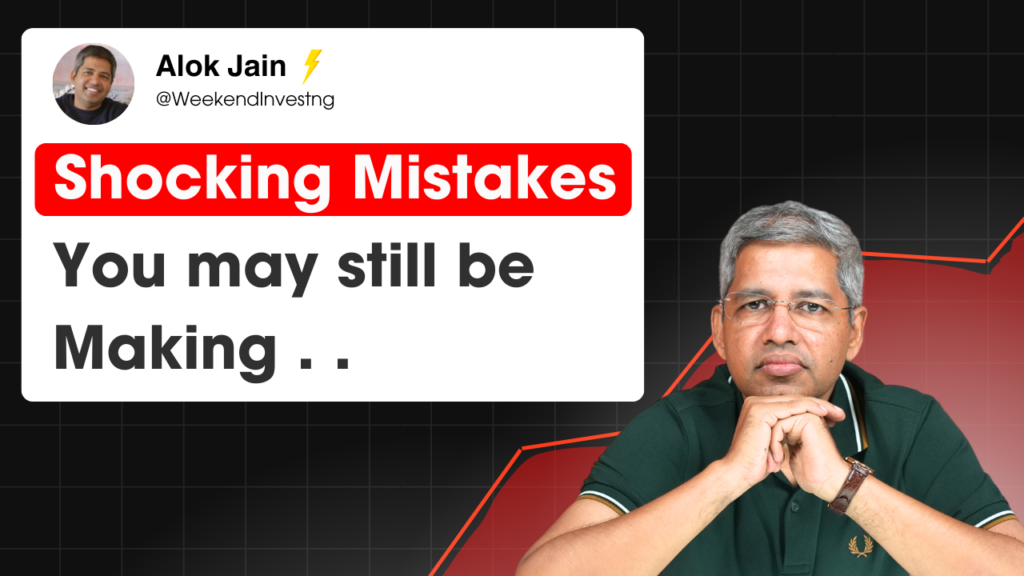
Where is the market headed?
Market Overview
The markets opened with a bang today, gapping up by almost 300 points, but then things took a turn. Ukraine launched a missile towards Russia, which caused a sharp reversal, and Nifty erased all of its gains from the morning session. It was initially looking like a good bounce, and there was a good probability that the market might close above the two-day high, signaling a possible follow-through. However, this hope was smashed in the second half of the day.
Despite the pullback, there are some positive signs. Nifty has found some support from the Election Day high level, and any break below this level could signal further downside. Otherwise, consolidation around this level is also a possibility, which could lead to another upward move later on.
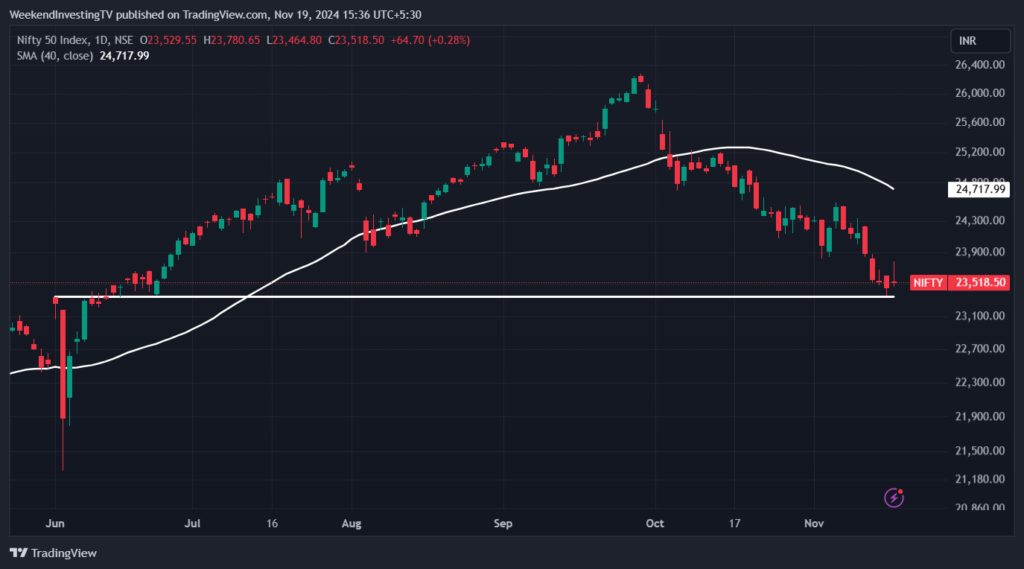
Nifty Next 50
The Nifty Junior index showed a similar trend, opening higher but closing almost 800 points lower, with a net gain of only 0.45%. The overall trend remains down, characterized by lower lows and lower highs. It’s unlikely we will see a U-turn or V-shaped recovery, and it will probably take some time for the market to consolidate and then make another attempt at moving higher.

Nifty Mid and Small Cap
The midcaps performed slightly better than others. The second-half selling was likely driven by FPI (Foreign Portfolio Investors), but midcaps and small caps were less affected, with midcaps closing near a two-day high. This is a positive sign, although the volatility suggests caution in making any bold calls on higher moves just yet. Small caps closed 0.9% higher but are still facing resistance at their current levels. They will need to break through this resistance to make any meaningful upward movement, but attempts over the last couple of months have failed
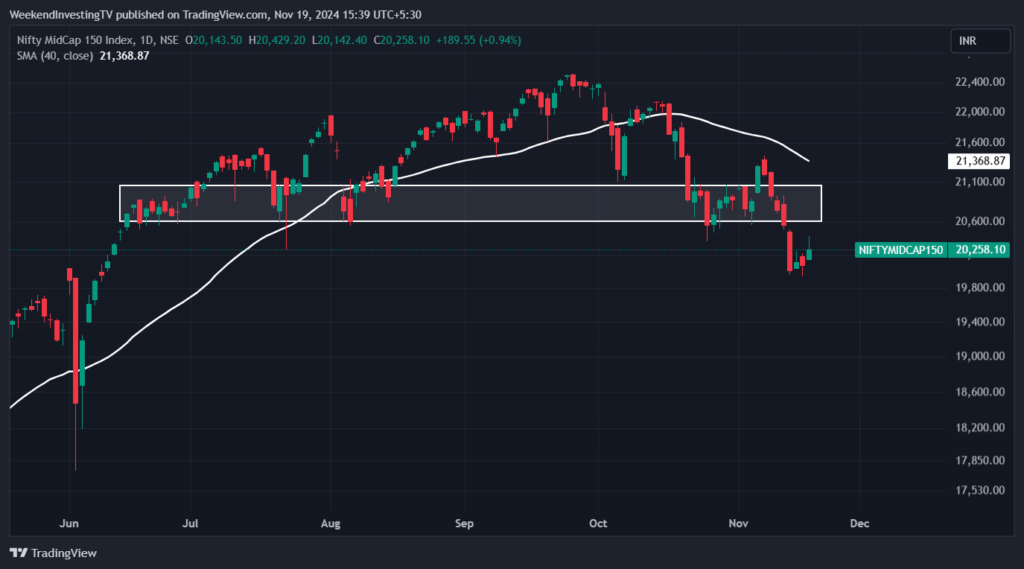
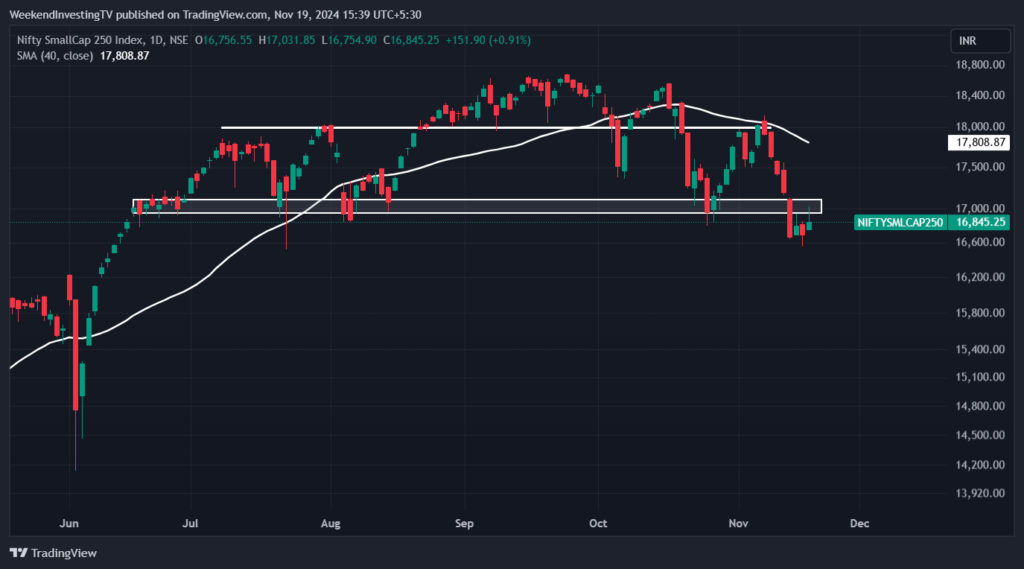
Nifty Bank Overview
Bank Nifty also saw a small upmove but lost 350 points from its intraday high, closing with a modest gain of 0.52%.
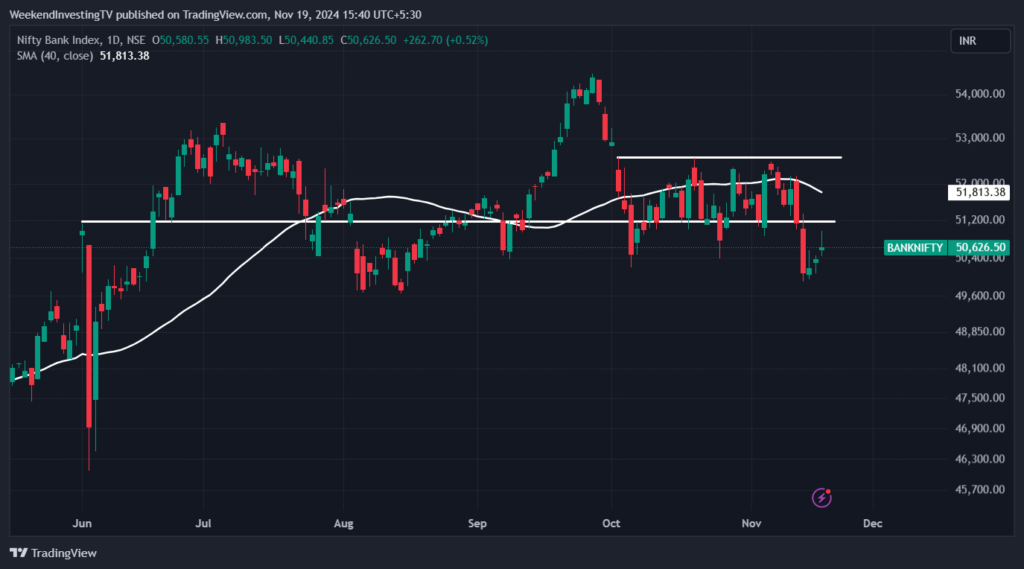
Advanced Declined Ratio Trends
In terms of market breadth, momentum was mixed with 172 declines against 323 advances in the first half. However, the second half of the session saw the bears making a comeback. FPIs sold off a net 1,400 crore in the previous session, while DIIs (Domestic Institutional Investors) were net buyers to the tune of 2,300 crore. This indicates that FIIs are currently less aggressive with their selling compared to a week or 10 days ago when their selling was much higher.
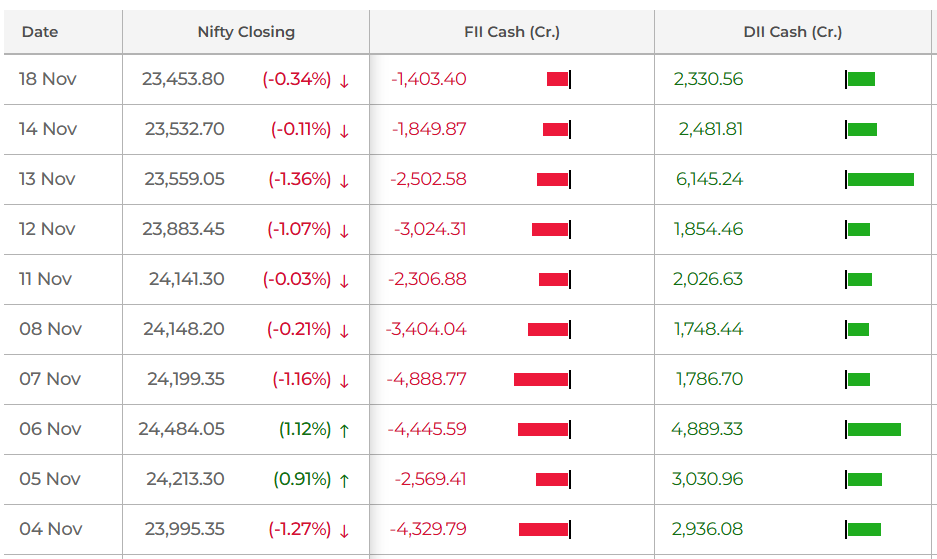

Nifty Heatmap
The heat map for the day was largely red, with heavy selling in stocks like Reliance, State Bank of India, L&T, and Maruti. On the positive side, HDFC Bank, Wipro, Tech Mahindra, and Titan saw gains. Interestingly, government insurance stocks fell after the announcement of 100% FDI in the insurance sector. In the Nifty Next 50 space, public sector banks like IRFC and PFC saw a good move, while stocks like IOC and Bosch were down.
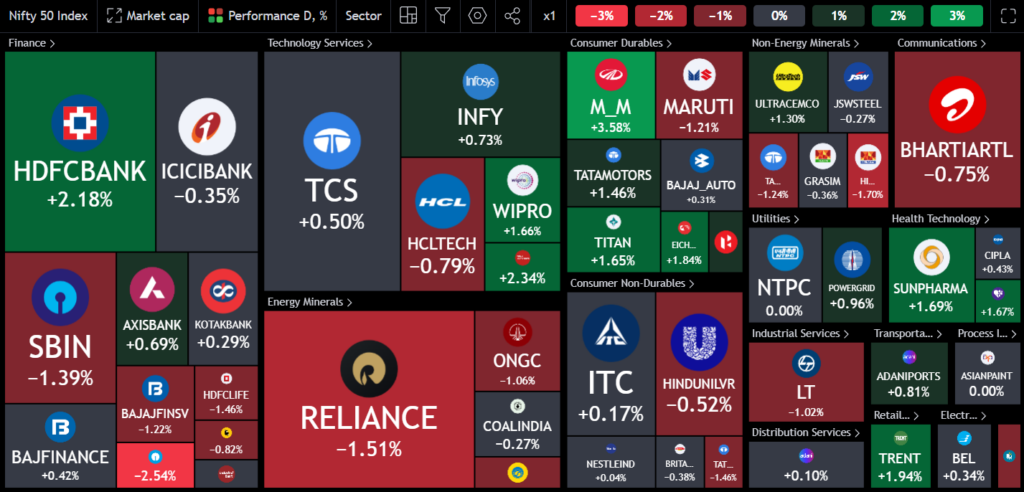
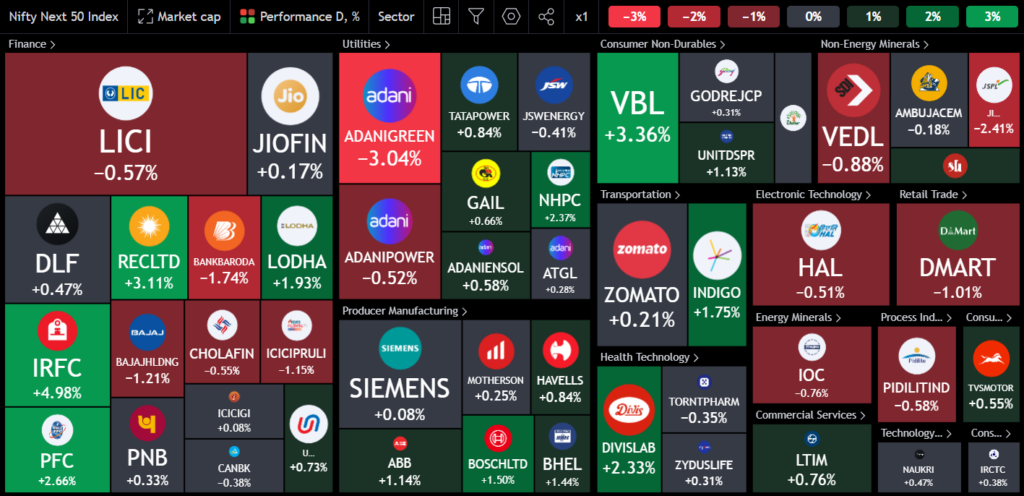
Sectoral Overview
Looking at the performance of various sectors, media, real estate, and autos posted small gains, while metals and PSU banks saw losses. Overall, the sectoral performance was muted, and many sectors are still showing negative returns over the last week. However, on a one-year basis, most sectors remain in the green, except for media, which has posted negative returns over the last 12 months.
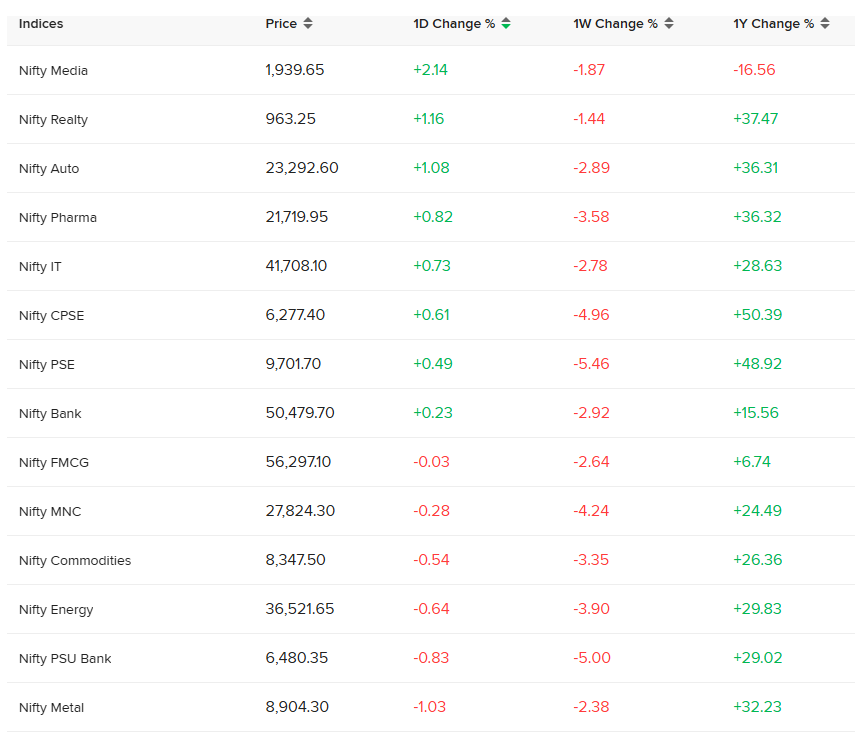
Sectors of the Day
Nifty Realty Index
In real estate, while the sector is gradually coming off, there are some signs of green shoots, particularly with stocks like Prestige Estates, GRI Properties, and Phoenix Mills doing decently well.
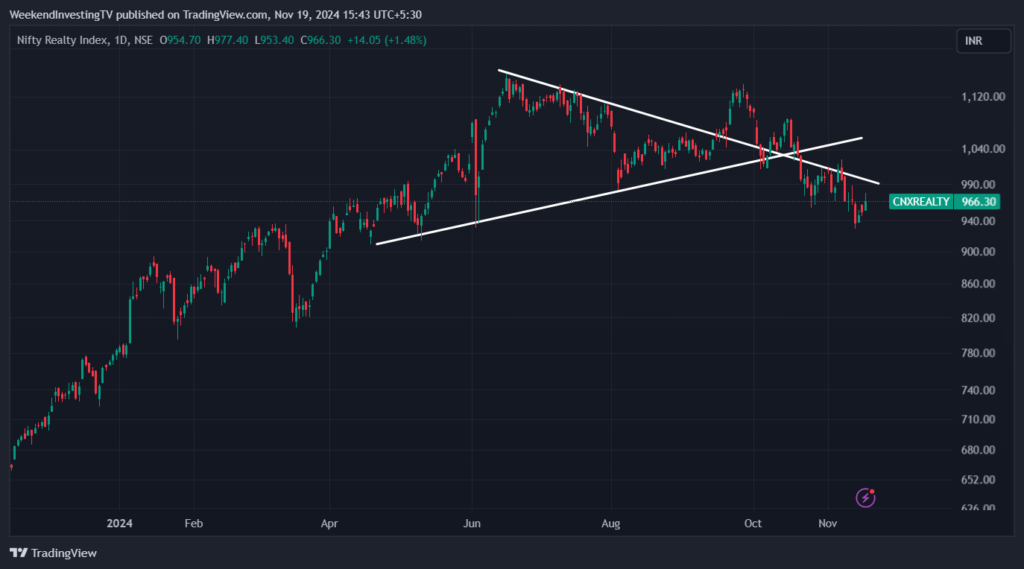
Stock of the Day
Kirloskar Brothers
The stock spotlight today is on Kirloskar Brothers, which saw an 8% gain. This stock is nearing its all-time highs and is in a cup-and-handle pattern, which could suggest further upside potential.
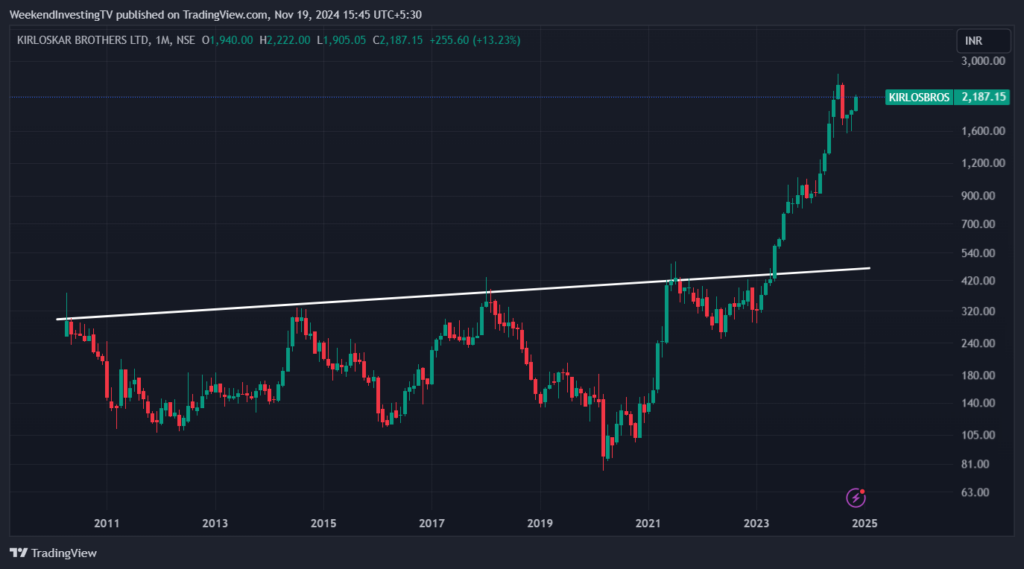
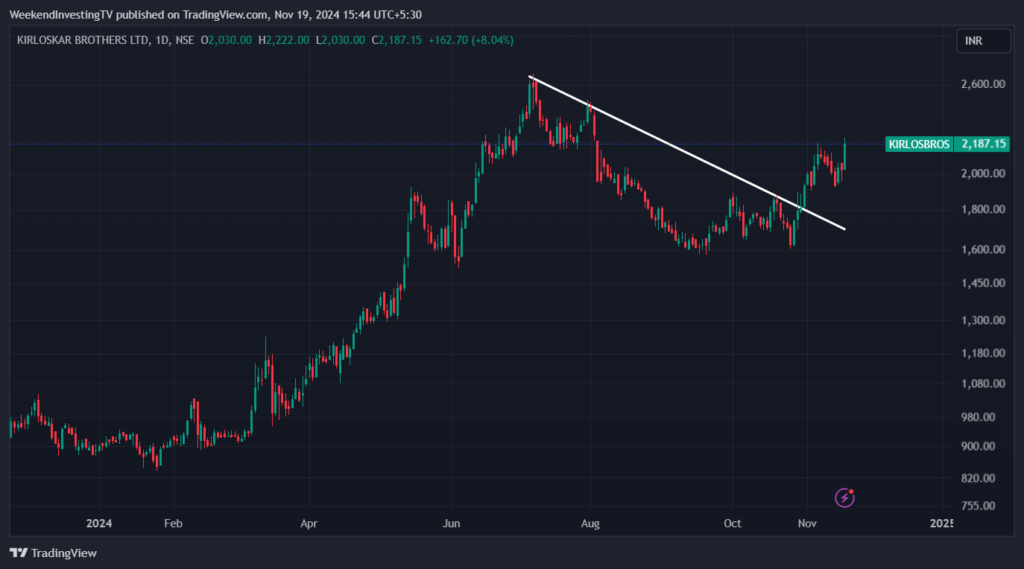
Story of the Day : Shocking mistakes that you might still be making in the market
According to the Association of Mutual Funds in India (AMFI), there are currently 187 sectoral and thematic funds as of October 31, making up around 40% of the total equity mutual funds in India. The net AUM (Assets Under Management) in these funds has grown substantially, with sectoral funds seeing a 107% growth in the last year.
Many retail investors are currently concentrating their bets on sectoral or thematic funds, which have done well in the past one or two years. For example, the defense sector has seen strong performance, which has led to the launch of several sectoral funds targeting specific sectors like energy or defense. These funds are often marketed with the promise of high past returns, making it easier to convince investors to invest in them.
However, there’s a catch. Many of these sectoral funds have higher costs and offer better margins to the distributors who push them. In my personal experience, wealth managers and banks have often tried to sell me sectoral funds, and the reason is clear: these funds generate higher commissions for them. While it’s true that a sectoral fund can provide higher returns if you enter it at the right time, the risk is that you could be buying at a point when the sector has already peaked.
Sectoral funds are inherently less diversified, and their performance is closely tied to the fate of one sector. This introduces significant sectoral risk, especially when there are regulatory changes, technological advancements, or economic shifts that impact the sector. For example, we saw the IT sector perform extremely well in the past, and once it had moved up significantly, a flurry of new sectoral funds targeting IT was launched. But these funds may not perform well in the short term once the sector hits a plateau.
Similarly, public sector banks (PSUs) have experienced a significant rise in the last year, and now we are seeing a wave of PSU sectoral funds. However, these funds may not continue to perform well in the coming years, as PSU stocks often experience long periods of stagnation before seeing a surge.
The key mistake investors often make is buying into sectoral funds without understanding the timing or the potential risks involved. A diversified approach, spread across various sectors, market caps, and segments, is usually the safer bet. Many investors fail to realize when to exit sectoral funds, which can lead to losses when the sector’s performance starts to wane.
Having a clear, diversified investment strategy is crucial. Don’t get stuck in the trap of chasing the latest hot sector or fund. Focus on a balanced portfolio that aligns with your long-term goals, and avoid getting swayed by short-term performance.
